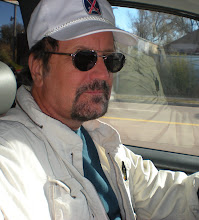
Normandy American Cemetery and Memorial
American Battle Monuments Commission
Source: American Battle Monuments Commission
View of the cemetery from the memorial.
Used for those deceased 1941 - 1945
Established June 8, 1944
Location near Colleville-sur-Mer, France
Total burials 9,387
Unknown burials 307
Burials by nation
United States: 9,387
Burials by war
World War II: 9,386 World War I: 1
The Normandy American Cemetery and Memorial is a World War II cemetery and memorial in Colleville-sur-Mer, Normandy, France, that honors American soldiers who died in Europe during World War II.
On June 8, 1944, the U.S. First Army established the temporary cemetery, the first American cemetery on European soil in World War II. After the war, the present-day cemetery was established a short distance to the East of the original site.
Like all other overseas American cemeteries in France for World War I and II, France has granted the United States a special, perpetual concession to the land occupied by the cemetery, free of any charge or any tax. This cemetery is managed by the American government, under Congressional acts that provide yearly financial support for maintaining them, with most military and civil personnel employed abroad. The U.S. flag flies over these granted soils.
The cemetery is located on a bluff overlooking Omaha Beach (one of the landing beaches of the Normandy Invasion) and the English Channel. It covers 70 ha (172 acres), and contains the remains of 9,387 American military dead, most of whom were killed during the invasion of Normandy and ensuing military operations in World War II. Included are graves of Army Air Corps crews shot down over France as early as 1942.
Only some of the soldiers who died overseas are buried in the overseas American military cemeteries. When it came time for a permanent burial, the next of kin eligible to make decisions were asked if they wanted their loved ones repatriated for permanent burial in the U.S., or interred at the closest overseas cemetery.
The Memorial
The names of 1,557 Americans who lost their lives in the conflict but could not be located and/or identified are inscribed on the walls of a semicircular garden at the east side of the memorial. This part consists of a semicircular colonnade with a loggia at each end containing maps and narratives of the military operations. At the center is a bronze statue entitled Spirit of American Youth. Facing west at the memorial, one sees in the foreground the reflecting pool, the mall with burial areas to either side and the circular chapel beyond. Behind the chapel are statues representing the United States and France. An orientation table overlooks the beach and depicts the landings at Normandy.
Notable interments
Grave marker of Medal of Honor recipient Jimmie W. Monteith.
Among the burials at the cemetery are three recipients of the Medal of Honor, including Theodore Roosevelt, Jr., son of President Theodore Roosevelt. After the creation of the cemetery, another son of President Roosevelt, Quentin, who had been killed in World War I, was exhumed and reburied next to his brother Theodore, Jr.
Notable burials at the cemetery include:
Lesley J. McNair, U.S. Army general, one of the two highest-ranking Americans to be killed in action in World War II
Jimmie W. Monteith, Medal of Honor recipient
Two of the Niland brothers, Preston and Robert
Frank D. Peregory, Medal of Honor recipient
Theodore Roosevelt, Jr., son of President Theodore Roosevelt, Medal of Honor recipient
Quentin Roosevelt, son of President Theodore Roosevelt, aviator killed in action in World War I
The cemetery is featured in the beginning of Steven Spielberg's 1998 film Saving Private Ryan. A World War II veteran, accompanied by his family, makes his way to the grave of Captain John Miller (played by Tom Hanks) and segues into the movie's opening battle sequence, the D-Day landing at Omaha Beach. The grave does not actually exist; the headstone for Miller was only brought to the cemetery for the movie. The Captain John Miller portrayed in the movie never existed, but the Private Ryan story is based upon the story of the Niland Brothers, two of whom are buried in the cemetery.

1 comment:
I am Gérard Delahaye, a french singer & song writer.
I went to Colleville sur Mer a few years ago and I was particularly moved by the graves of the american soldiers who fell on the D Day. I wrote a song about that : "Les plages de Normandie", you can hear it here:
https://open.spotify.com/track/01E4EbOeJ1nhwh0I5DgtDD
With this song, I would like to make a very simple video with a picture of the american cemetery. Would you allow me to use one of your pictures ?
Thank you anyway for reading my words,
G. Delahaye
Post a Comment